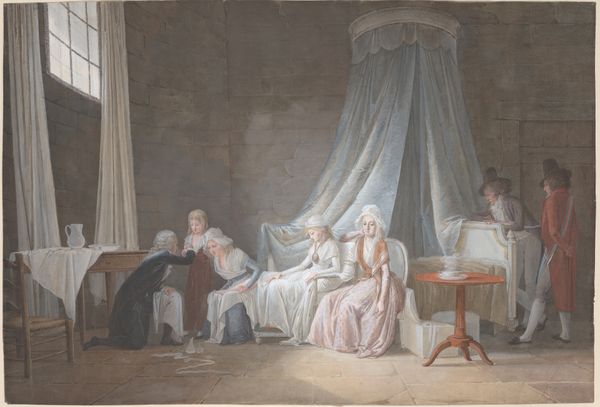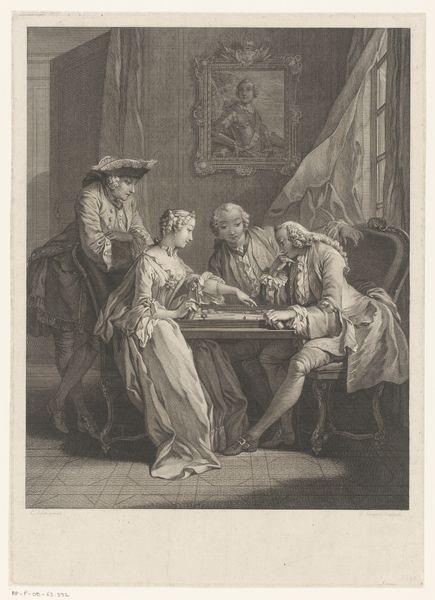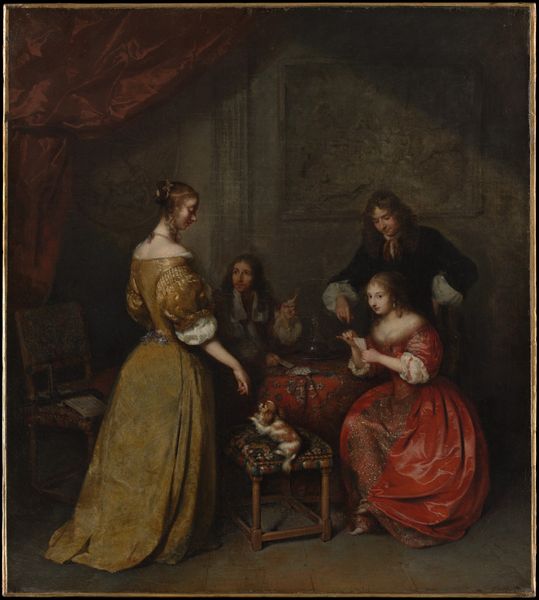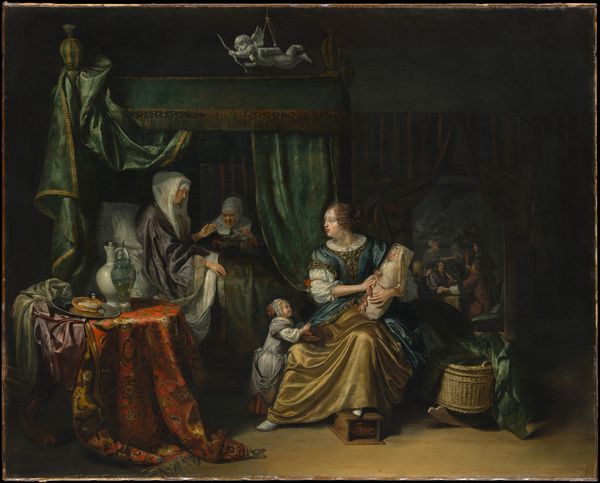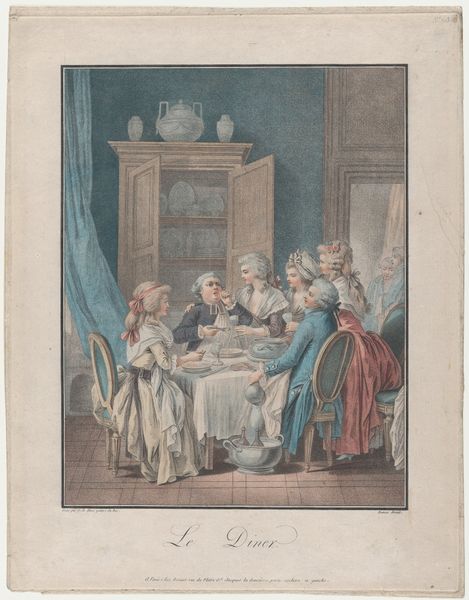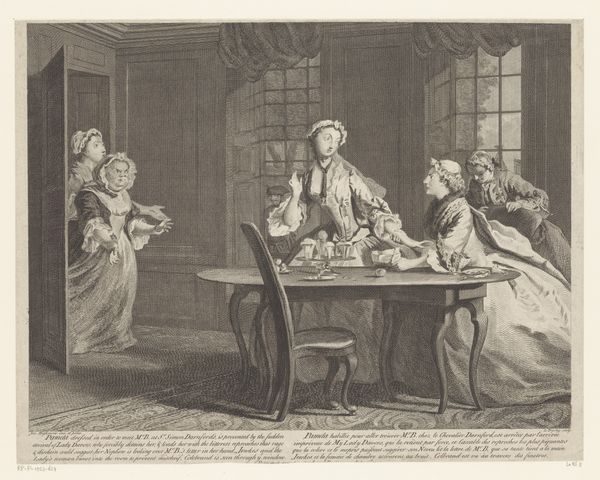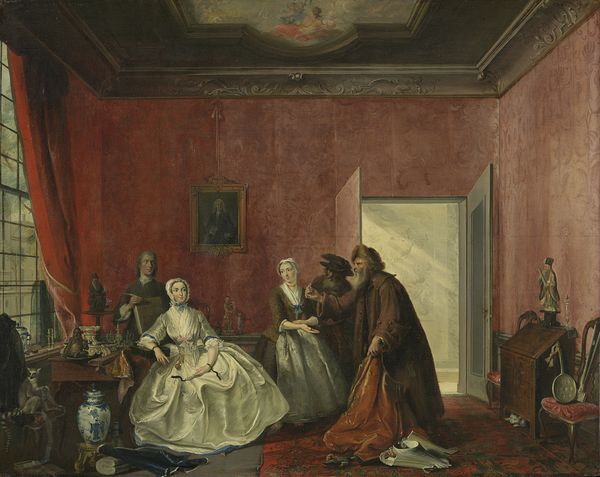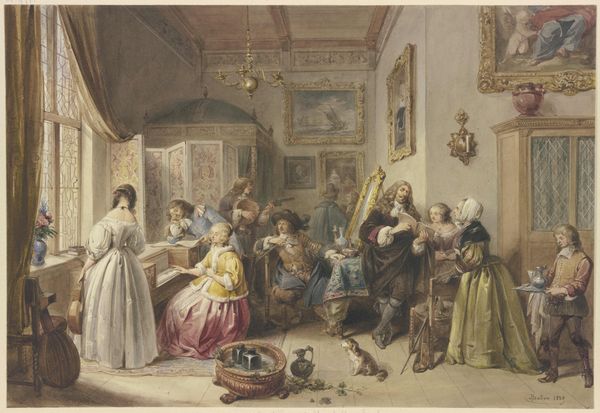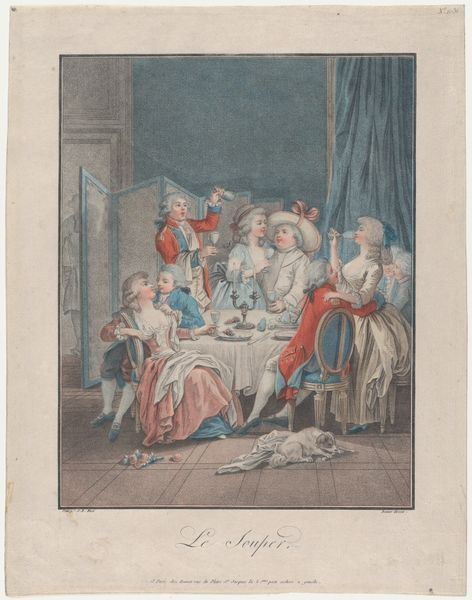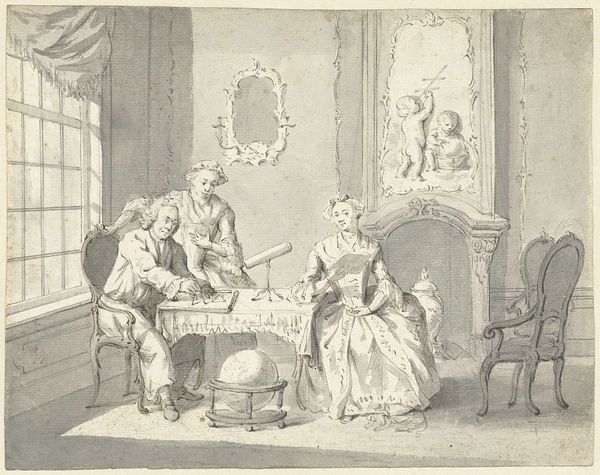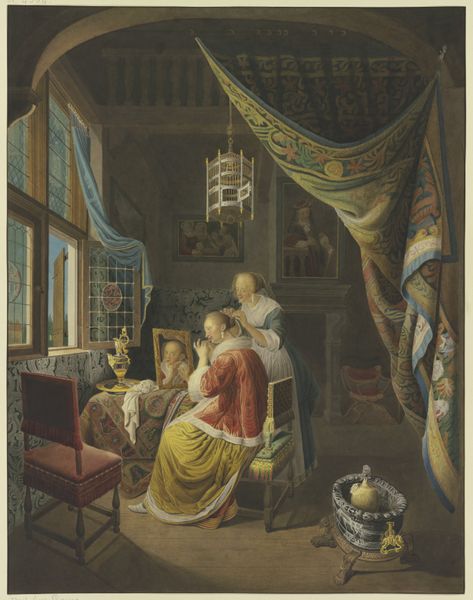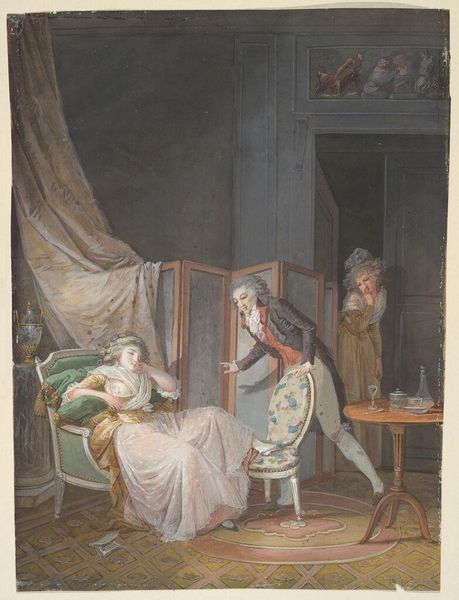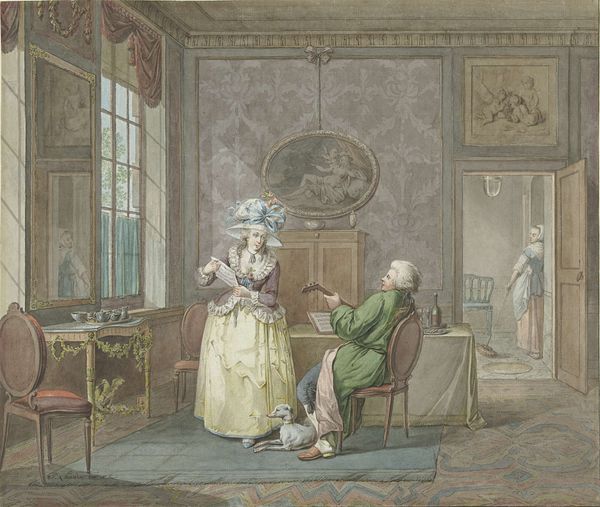
drawing, tempera, gouache, watercolor, chalk, graphite
#
portrait
#
drawing
#
tempera
#
gouache
#
caricature
#
watercolor
#
german
#
classicism
#
group-portraits
#
chalk
#
15_18th-century
#
graphite
#
portrait drawing
#
genre-painting
#
portrait art
#
watercolor
#
fine art portrait
Copyright: Public Domain
Curator: Welcome. Here we have Johann Friedrich August Tischbein's "Family Scene," a lovely gouache, tempera, watercolor, and chalk drawing housed here at the Städel Museum. What catches your eye? Editor: It feels quite domestic, doesn't it? Tranquil, perhaps a little staged. The composition is carefully balanced; everyone seems aware of being observed. There's a clear hierarchy, even in how they’re positioned within the frame. Curator: Absolutely. Consider the materials themselves: the blending of gouache and watercolor affords a luminosity that softens the rather rigid social mores implied. Chalk lends a texture that suggests the delicate fabric and lace prominent in their clothing. And look at the composition's reliance on implied diagonal lines, reinforcing class structure, separating those with leisure and those…supported. Editor: I see your point about implied class structure. There's something unsettling about that placid surface. Note the man’s gaze directed at the child holding a riding crop, perhaps signifying paternal legacy. Then observe the way that the gaze is reflected formally through lines and composition within a relatively tight pictorial space. Curator: It’s fascinating how the artist manipulates these symbolic elements, reflecting power structures through clothing, posture and placement. Consider how production, craft and materiality converge. Tischbein isn't merely depicting a family; he’s crafting a visual statement about their status. Editor: The setting seems confined, almost theatrical. This is particularly striking considering the classicist influences the image exhibits, visible in the idealization and restraint. Observe how the window is completely absent in this room: It produces this effect that you talk about because it keeps all the bodies inside, on display. Curator: Right! Absence of any opening onto labor and material—that lack of access is itself a visual construction enforcing power. Tischbein presents family dynamics not as lived experience, but as constructed performances within a material world. Editor: It is striking, this calculated representation. And the choice of watercolor, tempera and gouache as opposed to oil creates an interesting sense of lightness, defying the heaviness of the themes discussed. Curator: A very clever juxtaposition. Ultimately, "Family Scene" reveals how social dynamics, production, and consumption coalesce within the sphere of 18th-century German portraiture. Editor: Indeed. A close formal analysis brings out tensions lying just beneath its veneer of serenity, showcasing the delicate balance that Tischbein struck in the material's construction.
Comments
No comments
Be the first to comment and join the conversation on the ultimate creative platform.
